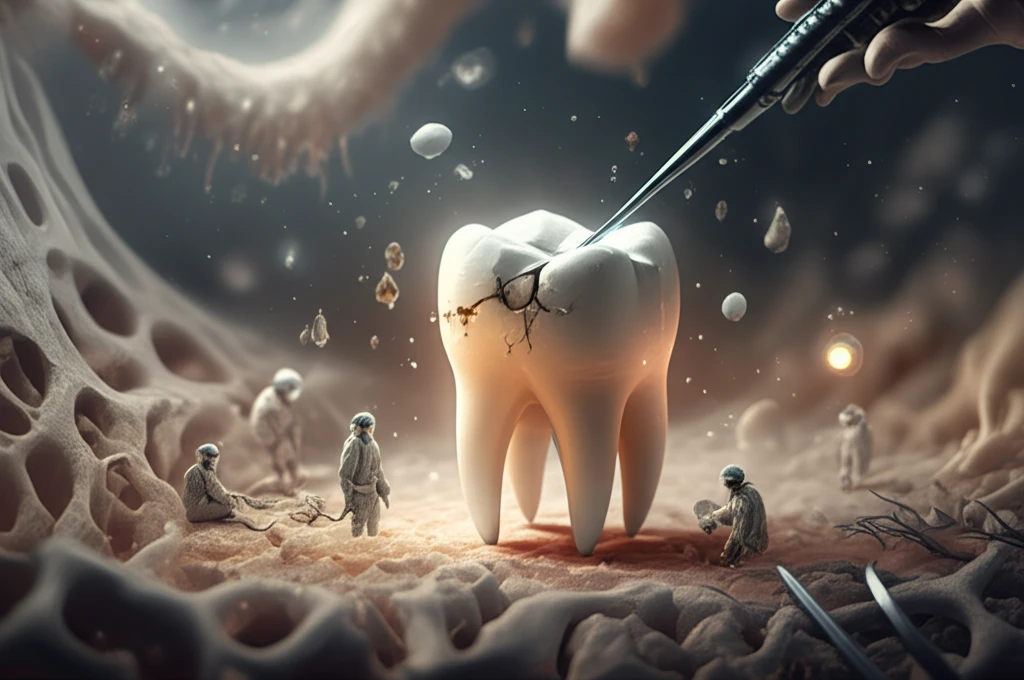
Root Canal Complications: Saving Your Tooth After a Fractured Instrument
"Discover how modern endodontic techniques and surgical precision can address complications from root canal treatments, offering hope for teeth with fractured instruments."
Root canal treatments are designed to save teeth that would otherwise be lost due to infection or decay. However, complications can arise, such as when a dental instrument fractures inside the tooth. This can be a scary situation, but understanding the issue and knowing the available solutions can ease your concerns. While no one wants to think about complications, being informed empowers you to make the best decisions for your dental health.
One of the primary reasons periapical lesions (infections around the root of a tooth) persist after root canal treatment is inadequate cleaning and disinfection of the root canal system. Procedural mishaps, like perforations or fractured instruments, exacerbate this issue by hindering the ability to thoroughly disinfect the infected canal. Think of it like trying to clean a pipe with a blockage – you can't get to all the dirt and debris.
Additionally, a poorly sealed coronal restoration (filling or crown) can allow bacteria to re-enter the tooth, leading to further infection and potential fracture. It’s a bit like leaving a window open during a storm – moisture and damage are inevitable. This article explores how a combination of advanced techniques and careful restoration can address these complications and help save your tooth.
The Case for Saving a Tooth with a Fractured Instrument

Consider the case of a 38-year-old male who presented with pain and discharge from a previously root canal-treated molar. Clinical examination revealed a fractured crown and a draining sinus, indicating ongoing infection. An X-ray confirmed the presence of a fractured instrument extending beyond the apex of the root, along with under-filled root canals. This situation, while complex, is not uncommon and highlights the challenges dentists face in such cases.
- Root Canal Re-treatment: The initial step involves carefully removing the old filling material and re-cleaning the canals to eliminate any remaining infection.
- Surgical Retrieval: A minor surgical procedure is performed to access the root and carefully remove the fractured instrument using specialized tools.
- Bone Grafting: Bone grafting helps to regenerate lost bone around the tooth, providing a stable foundation for the restoration.
- Definitive Restoration: Placing a crown protects the tooth and restores its function and appearance.
Don't Give Up on Your Tooth
If you’re facing a similar situation, remember that advancements in endodontics offer hope. Factors such as the presence of infection, the anatomy of the root canal, and the position of the fractured instrument can influence the treatment approach and prognosis. However, with a skilled dental team and a proactive approach, many teeth with complications can be saved, restoring both function and your confident smile.
